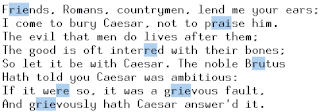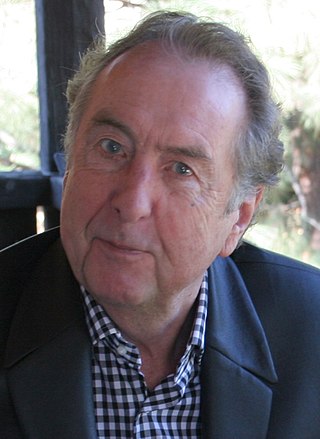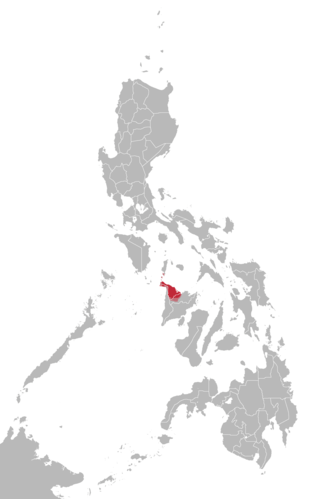Related Research Articles
This is a record of notable programming languages, by decade.

A regular expression, sometimes referred to as rational expression, is a sequence of characters that specifies a match pattern in text. Usually such patterns are used by string-searching algorithms for "find" or "find and replace" operations on strings, or for input validation. Regular expression techniques are developed in theoretical computer science and formal language theory.

Eric Idle is an English actor, comedian, songwriter, musician, screenwriter and playwright. He was a member of the British comedy group Monty Python and the parody rock band the Rutles. Idle studied at Pembroke College, Cambridge, and joined Cambridge University Footlights. He has received a Grammy Award as well as nominations for two Tony Awards.
The Resource Description Framework (RDF) is a method to describe and exchange graph data. It was originally designed as a data model for metadata by the World Wide Web Consortium (W3C). It provides a variety of syntax notations and data serialization formats, of which the most widely used is Turtle.
A fortnight is a unit of time equal to 14 days. The word derives from the Old English term fēowertīene niht, meaning "fourteen nights".

No Reason to Cry is the fourth solo studio album by Eric Clapton, released by RSO Records on 27 August 1976. The album was recorded in Malibu and Los Angeles between December 1975 to May 1976. The record went silver in the U.K.
Acculturation is a process of social, psychological, and cultural change that stems from the balancing of two cultures while adapting to the prevailing culture of the society. Acculturation is a process in which an individual adopts, acquires and adjusts to a new cultural environment as a result of being placed into a new culture, or when another culture is brought to someone. Individuals of a differing culture try to incorporate themselves into the new more prevalent culture by participating in aspects of the more prevalent culture, such as their traditions, but still hold onto their original cultural values and traditions. The effects of acculturation can be seen at multiple levels in both the devotee of the prevailing culture and those who are assimilating into the culture.

The Yugurs, Yughurs, Yugu, traditionally known as Yellow Uyghurs, are a Turkic-Mongolic ethnic group and one of China's 56 officially recognized ethnic groups, consisting of 16,719 persons, according to the 2000 census. The Yugur live primarily in Sunan Yugur Autonomous County in Gansu. They are mostly Tibetan Buddhists. The majority of Yugurs speak a Turkic language, while Mongolic and Chinese are also used in eastern provinces.
Sri Lankan literature is the literary tradition of Sri Lanka. The largest part of Sri Lankan literature was written in the Sinhala language, but there is a considerable number of works in other languages used in Sri Lanka over the millennia. However, the languages used in ancient times were very different from the language used in Sri Lanka now.

Aklanon (Akeanon), also known as Bisaya/Binisaya nga Aklanon/Inaklanon or simply Aklan, is an Austronesian language of the Bisayan subgroup spoken by the Aklanon people in the province of Aklan on the island of Panay in the Philippines. Its unique feature among other Bisayan languages is the close-mid back unrounded vowel occurring as part of diphthongs and traditionally written with the letter ⟨Ee⟩ such as in the autonyms Akean and Akeanon. However, this phoneme is also present in other but geographically scattered and distant Philippine languages, namely Itbayat, Isneg, Manobo, Samal and Sagada.

Eric Pratt Hamp was an American linguist widely respected as a leading authority on Indo-European linguistics, with particular interests in Celtic languages and Albanian. Unlike many Indo-Europeanists, who work entirely on the basis of written materials, he conducted extensive fieldwork on lesser-known Indo-European languages and dialects, such as Albanian, Arbëresh and Arvanitika; Breton; Welsh; Irish; Resian and Scots Gaelic.
Bilingual–Bicultural or Bi-Bi deaf education programs use sign language as the native, or first, language of Deaf children. In the United States, for example, Bi-Bi proponents state that American Sign Language (ASL) should be the natural first language for deaf children in the United States, although the majority of deaf and hard of hearing being born to hearing parents. In this same vein, the spoken or written language used by the majority of the population is viewed as a secondary language to be acquired either after or at the same time as the native language.

"Eres tú" is a song recorded by Spanish band Mocedades, written by Juan Carlos Calderón. It represented Spain in the Eurovision Song Contest 1973 held in Luxembourg placing second which was followed by a global success.
The Paget Gorman Sign System, also known as Paget Gorman Signed Speech (PGSS) or Paget Gorman Systematic Sign Language is a manually coded form of the English language, designed to be used with children with speech or communication difficulties.
The Illyrian language was an Indo-European language or group of languages spoken by the Illyrians in Southeast Europe during antiquity. The language is unattested with the exception of personal names and placenames. Just enough information can be drawn from these to allow the conclusion that it belonged to the Indo-European language family.
Proto-Mongolic is the hypothetical ancestor language of the modern Mongolic languages. It is very close to the Middle Mongol language, the language spoken at the time of Genghis Khan and the Mongol Empire. Most features of modern Mongolic languages can thus be shown to descend from Middle Mongol. An exception would be the Common Mongolic pluritative voice suffix -cAgA- 'do together', which can be reconstructed from the modern languages but is not attested in Middle Mongol.
The Itsekiri language is a major branch of the Yoruboid group of languages, which as a group, is a key member of the Volta–Niger sub-family of the Niger–Congo family of African languages. Itsekiri is spoken by nearly 1,000,000 people in Nigeria as a first language and by many others as an additional language notably in the Niger Delta and in parts of Edo and Ondo states of Nigeria. The other key members of the Yoruboid group are Yoruba and Igala along with the various Yoruba dialects spoken in Benin and Togo.

.NET Compiler Platform, also known by its codename Roslyn, is a set of open-source compilers and code analysis APIs for C# and Visual Basic (VB.NET) languages from Microsoft.
Yei Zhuang is a Northern Tai language complex spoken in Wenshan Prefecture, Yunnan, China. Its speakers are also known as the Sha (沙族), a subgroup of the Zhuang.
Korafe is a Papuan language spoken in Oro Province, in the "tail" of Papua New Guinea. It is part of the Binanderean family of the Trans–New Guinea phylum of languages. Korafe or could also be called Kailikaili, Kaire, Korafe, Korafi, Korape, and Kwarafe is a language spoken in the Oro Province more specifically in the Tufi District, and Cape Nelson Headlands.
References
- ↑ Ere at Ethnologue (25th ed., 2022)
